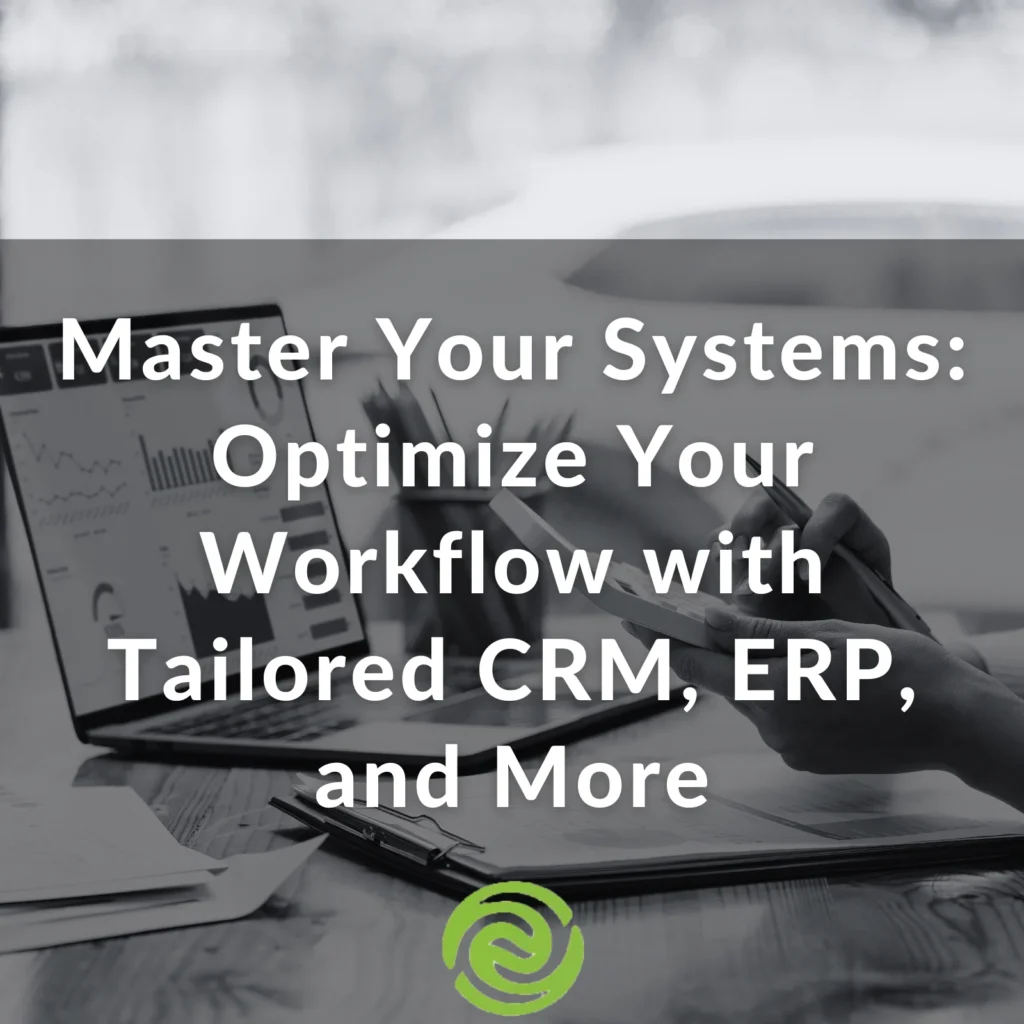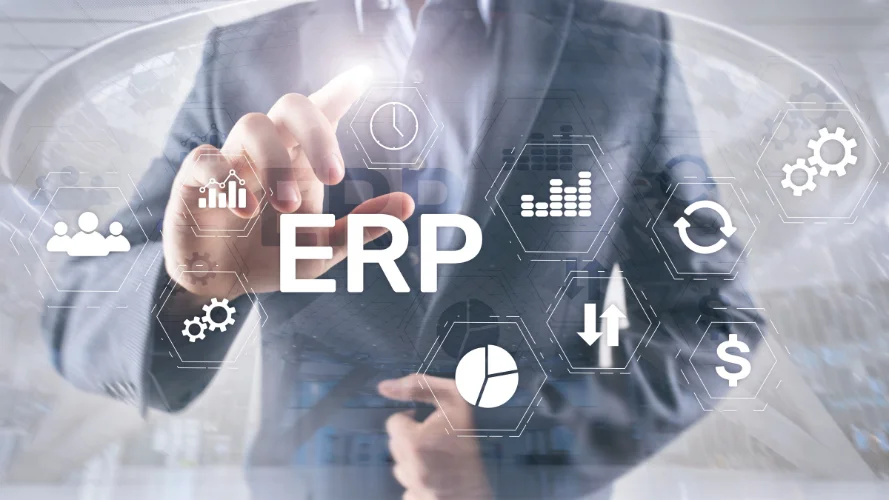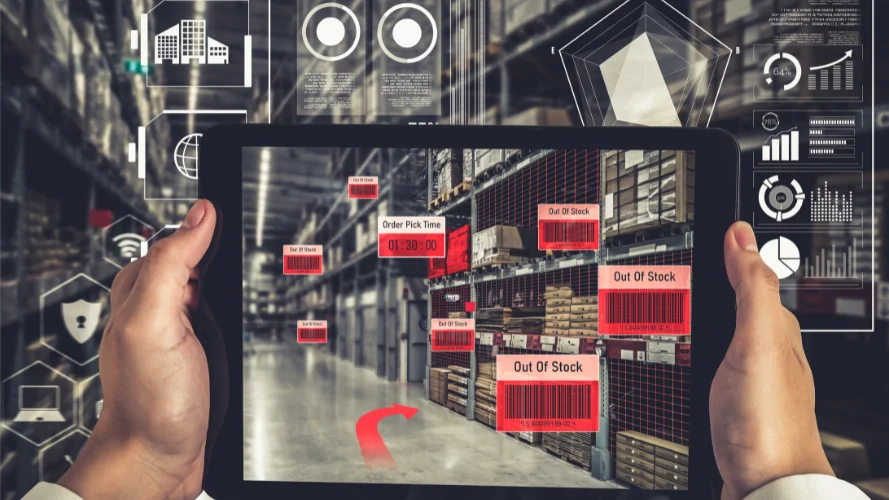In the modern manufacturing landscape, companies are facing unprecedented pressures to increase productivity, maintain product…
Master Your Systems: Optimize Your Workflow with Tailored CRM, ERP, and More

There’s a slew of technology and tools to help streamline your system, add efficiencies to your operations and advance your business relationships from cold contacts to closed customers. The challenge is figuring out what technology and tools you need and when you need it. Our basic rule of thumb is to identify the tools you need NOW to address existing pain points within your business systems AND the systems you’re looking to evolve to within the next 5 years.
Taking the first step can be a challenge because there isn’t one right way to do it. You need to start by considering what your company needs, and the goals you want to achieve. The next step is to decide what you need to build, add, adapt or integrate. The methodology we use to go about this is what we call Build, Buy, or Both.
You can build custom solutions, buy existing solutions off the shelf, or do a little of both to integrate systems together into a complete solution. The choice is yours.
Now then, let’s dive deeper into the details of the systems that play key roles in your organization.

CRM (Customer Relationship Management)
Often regarded as a digital rolodex, CRMs are far more sophisticated than simple data storage systems. They provide valuable insights into your sales pipeline, from prospecting with new clients to maintaining existing customer relationships. If you’re struggling to track prospect or customer touchpoints or follow-up activities, a CRM can streamline your sales follow-ups, providing a centralized hub for this data. Having this system in place and running like a well-oiled machine will assist you and your team in understanding the sales pipeline, how long it takes to convert prospects into paying customers, and managing ongoing customer relationships. CRMs can also house Marketing Automation Platforms (MAPs), empowering you to nurture leads through personalized marketing campaigns.
MAP (Marketing Automation Platform)
Also called Martech systems, a MAP helps you automate and track marketing campaigns across channels like email, text messages, social media, and websites. It monitors prospect interactions, tracking them through the marketing funnel and identifying where potential customers drop off. Usually, someone on your team needs to know how to set up the automation and campaigns and, if needed, integrate it with an existing CRM. Having all this information in one place allows you to refine your approach, crafting campaigns that resonate with your audience and ensuring every lead gets the attention it deserves.
CMS (Content Management System)
A CMS simplifies file management, letting you securely store, index, and search vast amounts of content. CMSs are also used in popular blogging and website building tools such as WordPress. Think of it as a digital network drive on steroids.
By adding content and workflows to document processes, CMS platforms help streamline content creation for websites and marketing materials while offering easy user access and enhanced search capabilities.
ERP (Enterprise Resource Planning)
ERP systems are the beating heart of business operations. They are the core system that consolidates data from various departments like order entry, purchasing, scheduling, quality control, inventory, and finance into a unified system. Though having this business-focused data compiled in one place is helpful, there is still a need for team members to be experienced with leveraging the system and relaying the information to leadership.
An ERP gives you real-time visibility into operations, providing comprehensive data to manage your business strategically. A great example of an ERP system is the one we helped Gatewood Wealth Solutions find. We looked for and selected features that provided long-term growth while streamlining their day-to-day functions.

MES (Manufacturing Execution System)
An MES provides granular insights into your manufacturing processes, often diving deeper than an ERP system does into the manufacturing operations. It monitors and measures overall equipment effectiveness (OEE), boosts production efficiency, and helps to improve product quality. An MES requires a knowledgeable manufacturing professional to understand the system and best utilize it. If you’re facing high defect rates or frustrated employees, an MES can help identify bottlenecks (literally), monitor equipment effectiveness, and improve overall visibility into operations.
WMS (Warehouse Management System)
If you are struggling with getting your inventory ducks in a row, it may be time to add a WMS into your systems for success. A WMS optimizes warehousing functions by improving receiving, shipping, and material movements. It helps track the location of stock, monitor inventory turns, and fulfill customer requests faster. These systems ultimately help improve customer satisfaction and reduce inventory operation costs.

Accounting Systems
The reality is the numbers matter. More importantly, having a pulse on your profits is the key to running a successful business. One way to make managing the math easier is by adopting a complete accounting system. A good accounting system consolidates data from CRMs, ERPs, MESs, and WMSs into accurate financial records. From tracking accounts payable to managing payroll, accounts receivable and maintaining a GAAP compliant general ledger, these systems pull all of your financial operations into one system. These systems do require an accountant or CFO with expertise in accounting principles.
HRIS (Human Resource Information System)
Hiring for many companies today can feel a bit like a revolving door, overwhelming and never ending. HRIS software tracks your employees through onboarding, HR management, training, and beyond. These systems also measure engagement, manage time entries, track PTO, and streamline payroll integration. If HR processes are slowing your growth, an HRIS can relieve the administrative burden by automating many tasks.

The Bottom Line… We speak the language
Understanding all of these software acronyms and how they fit together can be a daunting task. You need an expert that can help you take the guesswork out of designing and implementing systems that fits your exact business needs. Swip Systems is here to help you determine what will work for you, how easy it would be to integrate, and coach you along the way. Not only do we assess your current software systems and processes but we dive deeper to understand where you want to take your solutions down the road. We take the fear of the unknown out of the equation and give you peace of mind knowing you have a professional at your side.






